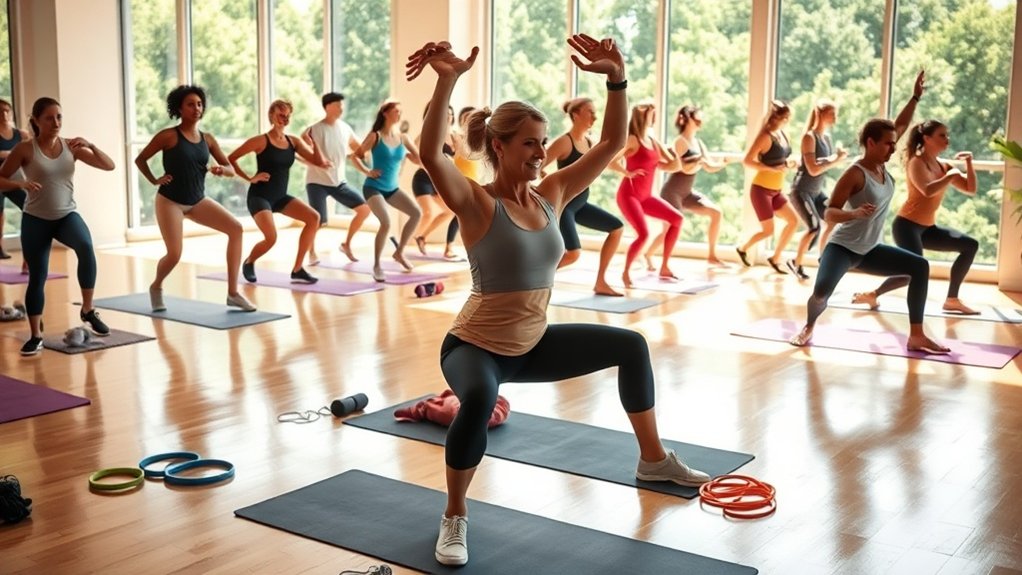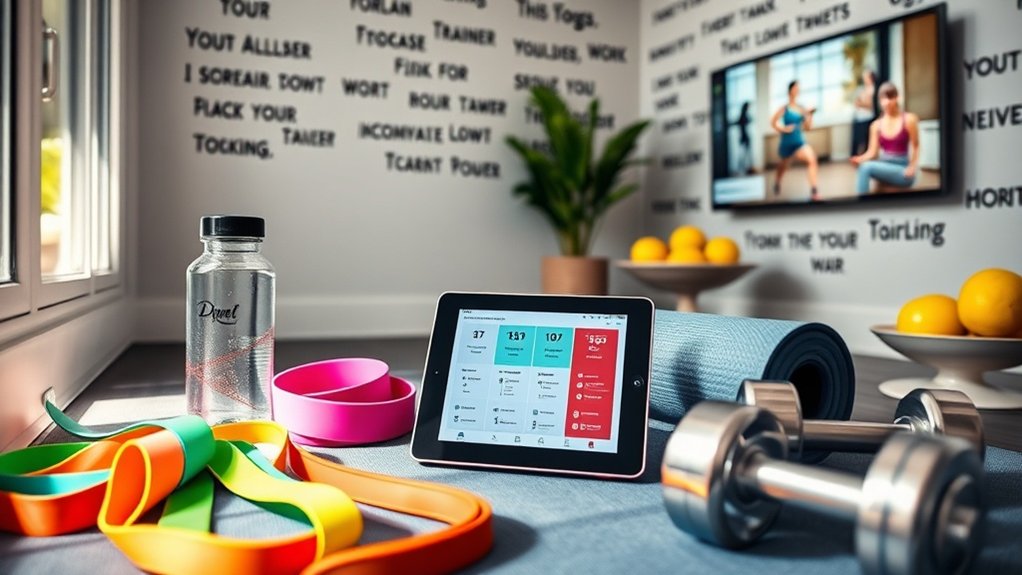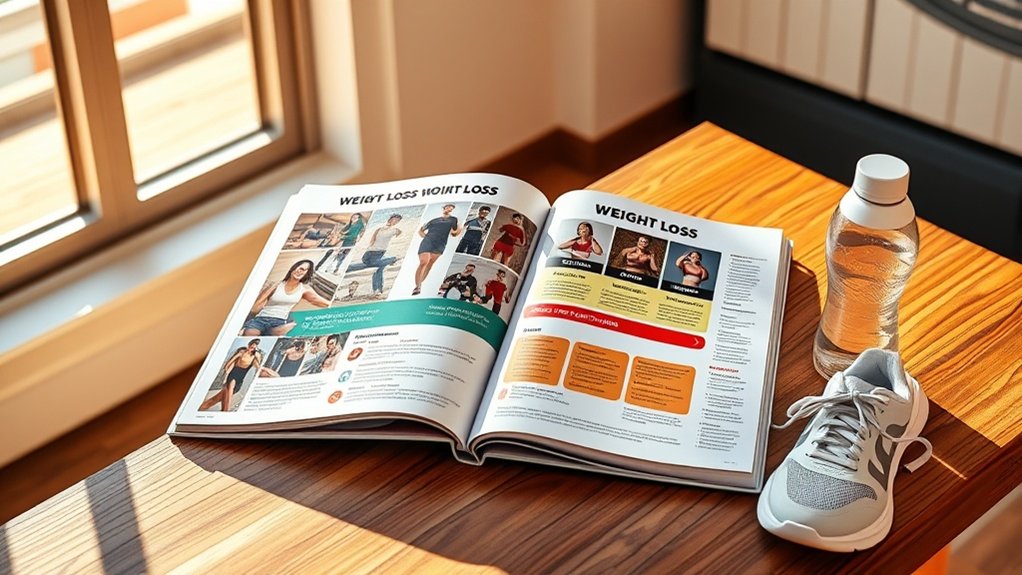A custom functional fitness plan trains your body for real-world movements by focusing on seven fundamental patterns: squatting, hinging, lunging, pushing, pulling, carrying, and rotating. You’ll start with foundational exercises like bodyweight squats and deadlifts, scheduling 2-3 weekly sessions with mobility work. This approach strengthens multiple muscle groups simultaneously, improving coordination and balance while reducing injury risk during everyday activities. By progressively incorporating dynamic movements that mirror daily tasks, you’ll build the strength and stability needed to maintain independence as you age and uncover specific techniques to address your unique movement limitations.
What Is Functional Fitness and How Does It Differ From Traditional Training?

While traditional gym-goers often spend hours isolating individual muscles on machines, functional fitness takes a fundamentally different approach by training your body for the movements you’ll actually perform in daily life.
Instead of targeting single muscle groups, you’ll engage in compound movements like squats, lunges, and pushing exercises that activate multiple muscle groups simultaneously. This method prioritizes mobility and stability alongside strength development, directly reducing your risk of injury during daily activities.
Traditional training may build impressive isolated strength, but functional movements prepare you for real-world tasks—lifting groceries, climbing stairs, or picking up children.
Understanding Movement Patterns: The Foundation of Functional Fitness
Your body executes seven fundamental movement patterns throughout each day, whether you’re aware of them or not: squat, hinge, lunge, push, pull, carry, and rotation.
Understanding movement patterns forms the foundation of functional fitness because these movements mirror everyday activities like lifting groceries, climbing stairs, or reaching overhead. Each pattern engages multiple muscle groups simultaneously, training your body as a cohesive unit rather than isolated parts.
Mastering functional movement patterns greatly improves your coordination, balance, and stability—three critical components for injury prevention.
When you practice these patterns regularly, you’re teaching your muscles to work in harmony during real-life movements. This approach directly boosts your overall physical health and supports functional independence, particularly as you age.
Functional Movement Screening and Corrective Exercise Integration
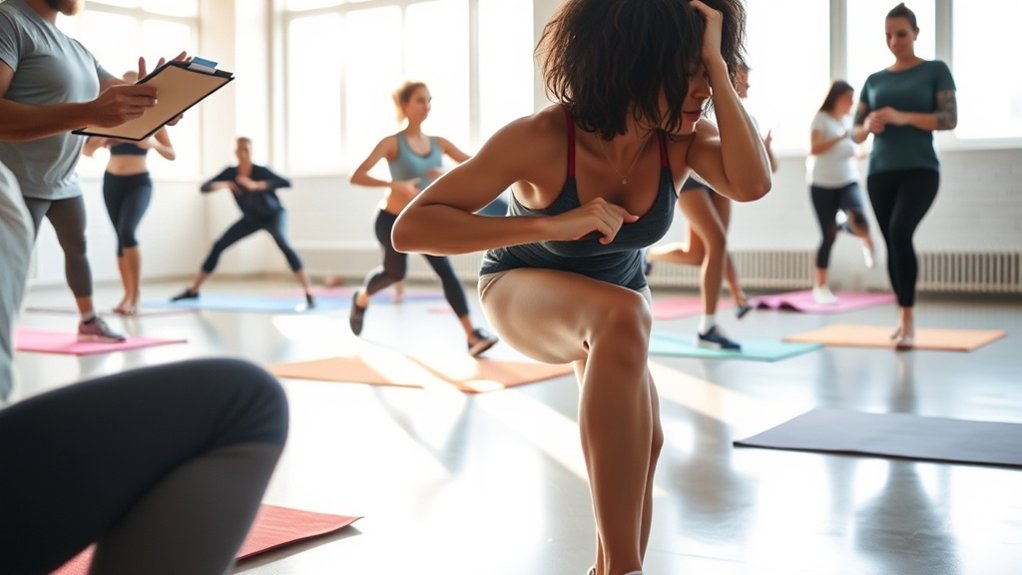
Before you can build an effective functional fitness plan, you need to identify exactly where your movement limitations exist.
Functional movement screening provides this vital baseline by evaluating seven key movement patterns—including squats, lunges, and push-ups—that assess functional movement capabilities through stability and mobility tests.
Once you’ve completed your screening, you’ll integrate corrective exercises targeting your specific deficiencies.
These targeted drills address weaknesses that reduce injury risk and improve functional mobility in your daily activities.
Research confirms that combining screening with corrective programming produces significant gains in strength and balance, along with improved flexibility.
You’ll reassess regularly for progress tracking, allowing adjustments to your exercise interventions.
This systematic approach guarantees you’re continuously developing better movement quality and functional performance.
Building Your Custom Functional Fitness Plan: Exercises and Progressions
After addressing your movement limitations through screening and corrective work, you’re ready to construct a plan that builds real-world strength and functionality.
Start with foundational exercises like the bodyweight squat, deadlifts, and push-ups that engage multiple muscle groups simultaneously. These functional movements mirror daily activities while strengthening your core stability.
Schedule 2-3 training sessions weekly, dedicating 10-15 minutes to mobility work. Include variations like walking lunges and kettlebell swings to develop a well-rounded fitness routine that improves balance and coordination.
Progress systematically by increasing intensity—add weights to your squats or incorporate dynamic exercises like burpees. Use mobility apps to track your advancement while respecting your body’s limits.
This structured approach guarantees your functional fitness plan develops practical strength that translates directly into improved daily performance.
Optimizing Functional Training for Daily Life, Injury Prevention, and Aging
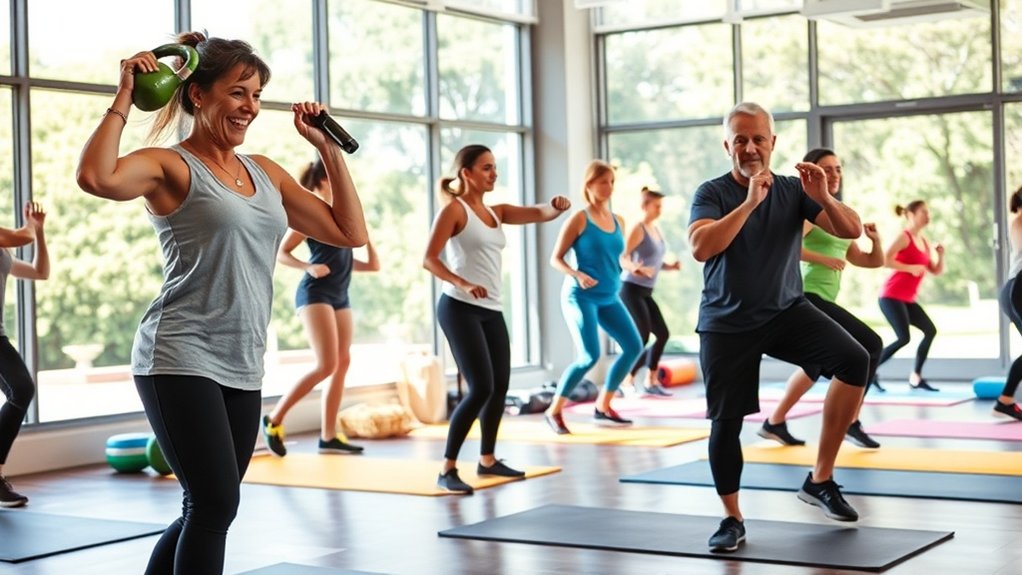
Functional training delivers its greatest value when strategically aligned with your daily movement patterns and long-term physical health. By incorporating 2-3 weekly sessions focused on real-life movements like squats and lunges, you’ll train multiple muscle groups simultaneously while building crucial core stability and balance for injury prevention.
Optimization Strategies for Maximum Benefit:
- Practice dynamic movements that boost strength, coordination, and flexibility to reduce fall risk during daily tasks.
- Focus on exercises mimicking everyday activities like carrying and lifting to prepare your body for physical demands.
- Prioritize balance work to counteract muscle weakness and decreased joint mobility associated with aging.
- Progress gradually through functional movements to maintain independence and support longevity.
This targeted approach guarantees your training translates directly into improved performance, safety, and well-being throughout your lifespan.
Frequently Asked Questions
How Does Functional Fitness Improve Daily Life?
Functional fitness improves your daily activities through strength building, balance improvement, and flexibility training. You’ll experience better mobility improvement, injury prevention, and posture correction while boosting energy levels, coordination skills, and mental health for ideal movement patterns.
What Is the 3 3 3 Rule for Working Out?
Ironically, less creates more: the 3 3 3 method maximizes workout efficiency through three exercises targeting push, pull, and lower-body movements. You’ll complete three sets each, boosting strength training and exercise variety while maintaining ideal workout duration for fitness progression.
What Is the Best Activity for Improving Functional Fitness?
You’ll improve functional fitness best by combining strength training with bodyweight movements, balance exercises, and core stability work. Incorporate mobility drills, dynamic stretching, resistance bands, and functional circuits while adding agility workouts and endurance activities for extensive results.
Should You Do Functional Training Every Day?
You shouldn’t do functional training every day. Your training frequency should balance functional exercises with recovery importance—aim for 2-3 sessions weekly. This workout variety supports strength building while preventing injury, allowing your personalized routines to optimize results effectively.

